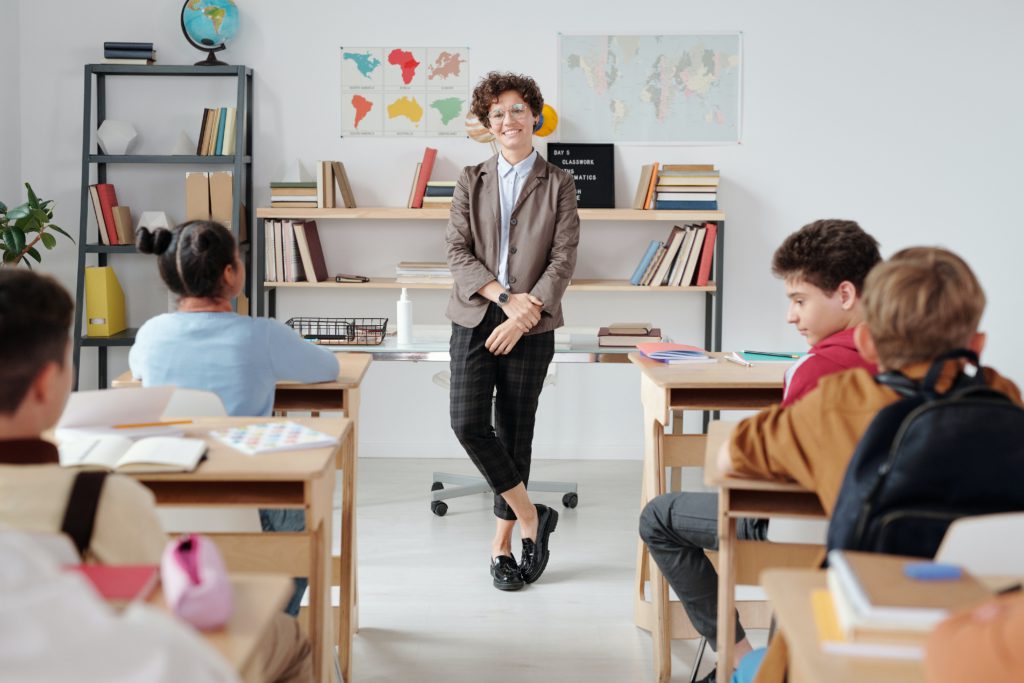Technology has drastically altered how we live and learn. Technology can transform education in the classroom, making it more dynamic and exciting. There are growing concerns, however, that too much technology may distract learners and educators.
In this article, we’ll look at the pros and cons of using technology in the classroom. It’s critical to grasp both sides of the discussion, whether you feel technology is a crucial tool for education or a distraction from traditional learning methods.
Definition of Technology in the Classroom
Technology in the classroom refers to using different digital technologies for educational purposes, such as computers, tablets, smartphones, and other electronic devices. These technologies enhance learners’ learning experiences and make education more interactive, engaging, and accessible.
Technology can be utilised in the classroom to deliver lectures, produce and share presentations, conduct online research, and communicate with other learners and educators in online learning communities. Educators can employ technology to create personalised, interactive learning experiences tailored to each learner’s needs.
These are not, however, the only examples of classroom technology. Virtual reality, augmented reality, and artificial intelligence are all instances of technology that can assist learners in learning. Technology’s use in the classroom is rapidly increasing, becoming an increasingly important component of modern education.
Read more: 10 Fun and Engaging Virtual Classroom Games Educators Must Try!
Pros of Technology in the Classroom
Technology in the classroom offers numerous benefits that can improve the learning experience for both educators and learners. Here are some key pros of using technology in the classroom:
-
Enhanced Engagement and Motivation for Learners
Technology can make teaching more dynamic and engaging for learners, increasing motivation and engagement. Learners can participate in virtual field trips, simulations, and other interactive activities using technology to make learning more fun and memorable.
-
Improved Access to Information and Resources
Learners have fast access to knowledge and resources thanks to technological advancements. Learners may access the information they need to complete assignments and develop their knowledge from anywhere through online libraries and virtual learning communities.
-
Increased Collaboration and Communication Among Learners
Technology allows learners to interact and connect with their classmates in new and innovative ways. Online forums, group chats, and other collaborative tools can assist learners in forming strong bonds and learning from one another.
-
Enhanced Ability to Customise and Personalise Learning
Educators may now create tailored and individualised learning experiences for each learner because of advancements in technology. Educators may use technology to build a learning environment that is personalised to each learner’s needs and interests, allowing them to better grasp and remember the material.
If you’re looking for technology to help with personalising needs of each learner, HeyHi is the perfect choice to try. Educators can now monitor each student’s strengths and weaknesses deeper. HeyHi offers a vast array of questions, but you can also create your own question bank. This feature allows you to tailor assessments to each student’s needs and goals, ensuring their success. Book a demo for HeyHi here
Read more: How to Identify and Address Learning Gap Effectively in Your Classroom
-
Improved Organisation and Time Management for Educators
Educators may use technology to help them stay organised and manage their time more successfully. Educators may simplify their work and focus on what matters most by using online grade books, lesson planning tools, and other organising tools.
Cons of Technology in the Classroom
While technology in the classroom has numerous advantages, it also has some disadvantages. Here are some key cons of using technology in the classroom:
-
Cost and Availability of Technology and Resources
Technology and resources can be expensive, and not all learners and educators, particularly those in underprivileged communities, may have access to them. This can lead to a digital gap, limiting some learners’ access to education.
-
Potential for Distractions and Misuse
Technology may be a source of distraction for both learners and educators, diverting time and attention away from learning. Additionally, students may use technology during class for non-educational activities such as playing games or accessing social media.
-
Need for Ongoing Training and Support for Educators and Learners
Technology is constantly evolving. Educators and learners require continuing training and assistance to stay current and use technology successfully in the classroom. This may be time-consuming and expensive.
-
Potential Impact on Learners’ Social and Communication Skills
Students’ social and communication skills may decrease due to higher use of technology in the classroom since they spend less time communicating face-to-face with their classmates and educators.
-
Potential for a Decrease in Face-To-Face Interaction and Personal Connections
Technology can create a more impersonal learning environment by depending on digital gadgets rather than direct interaction between learners and educators. This may result in less personal connections and a lack of empathy and understanding among learners.
Conclusion
In conclusion, using technology in the classroom presents advantages and disadvantages. It’s essential to weigh the pros and cons of technology in education to find the right balance between maximum benefits and minimal drawbacks.
Technology can boost engagement and motivation, improve access to information and resources, increase collaboration and communication, and customise and personalise learning. However, it can also be costly and inaccessible, a source of distraction, require ongoing training, negatively impact social and communication skills, and reduce face-to-face interaction and personal connections.
To effectively use technology in the classroom, a balance must be found. This can be achieved by limiting and targeting technology use, integrating it with traditional learning experiences, and providing students and teachers with the necessary training and support. Technology will continue to play a significant role in education, and finding the right balance can ensure that it enhances student learning.
